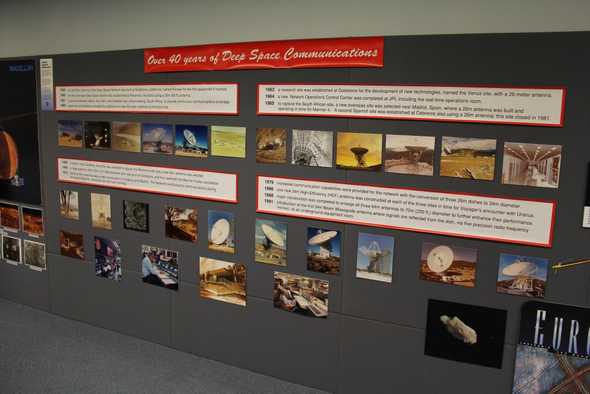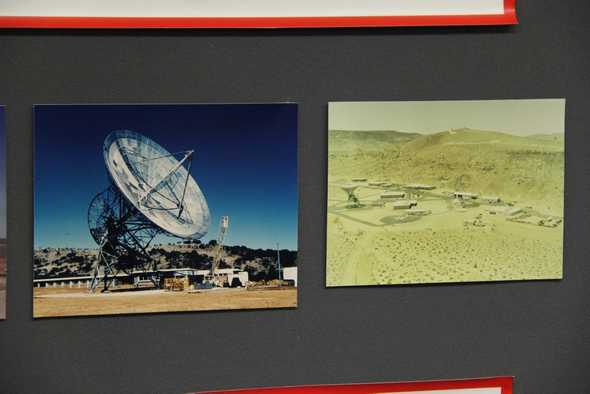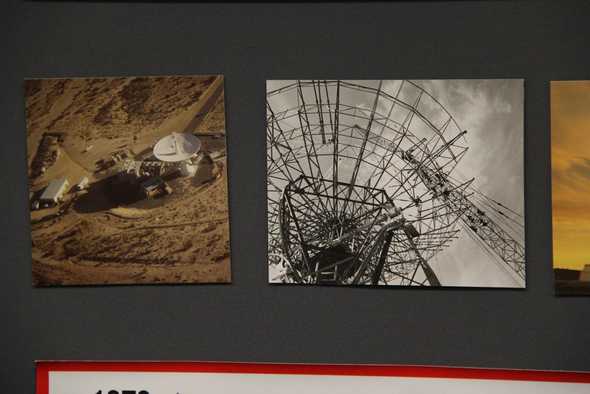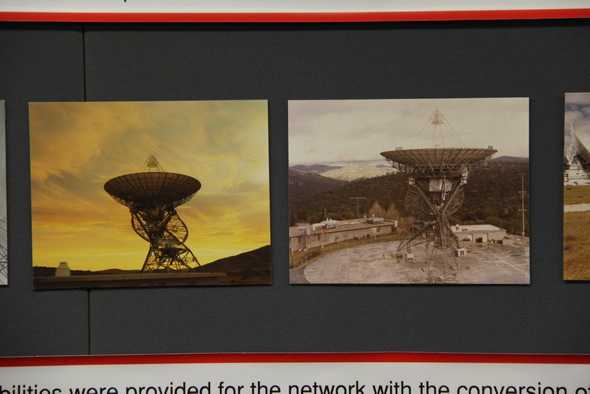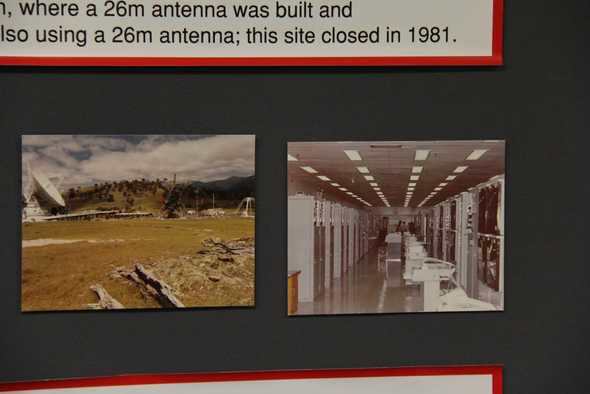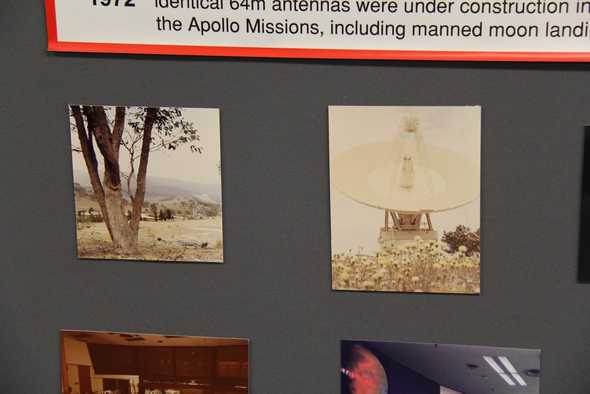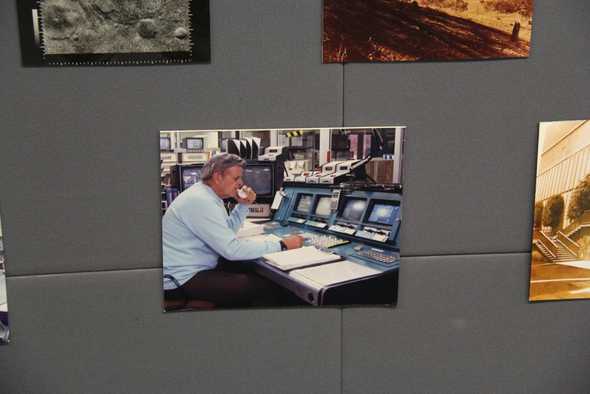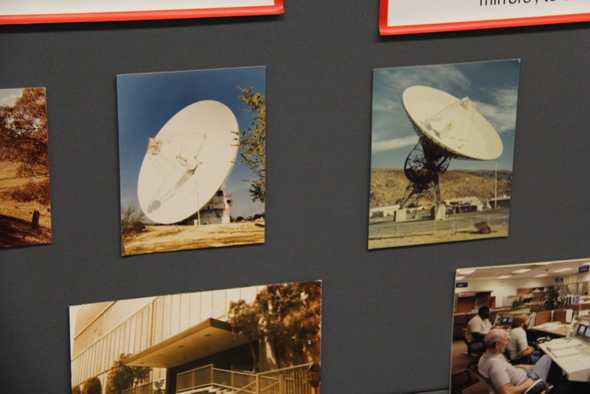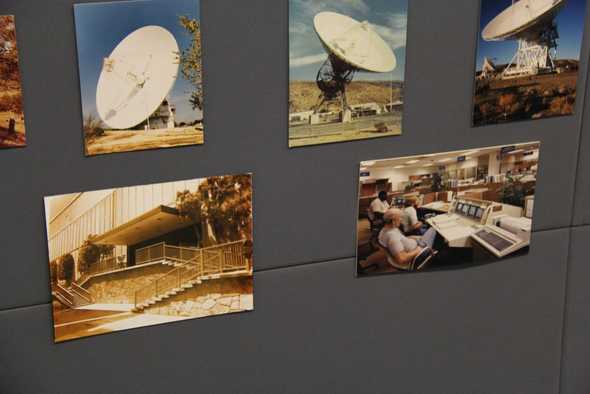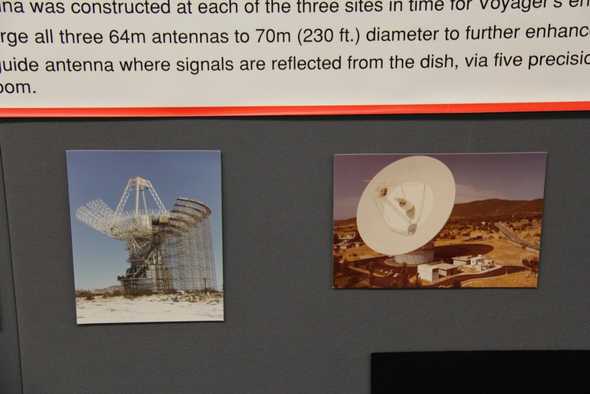Goldstone Museum: Over 40 years of Deep Space Communications
The Deep Space Network has tracked and communicated with spacecraft since 1958. Here is a timeline of events in a exhibit at Goldstone.
NASA’s Deep Space Network (DSN) provides both navigation and communications for spacecraft like Cassini bound for Saturn, Stardust traveling to Comet Wild 2, the mars orbiters, and other distant explorers.
Its high-powered transmitters deliver commands to direct and maneuver the spacecraft, while its sensitive receivers collect the precious science data including amazing images acquired from distant planets.
Sites around the world in California, Australia, and Spain permit constant contact with spacecraft as the Earth rotates. The largest antenna dishes are 70 meters (230 feet) in diameter.
The data received is forwarded to the Jet Propulsion Laboratory in Pasadena, California where it is processed in the Deep Space Operations Center for used by scientists around the world.
1958 the first 16m antenna of the Deep Space Network was built at Goldstone, California; named Pioneer for the first spacecraft it tracked. 1960 the first overseas Deep Space Station was established at Woomera, Australia using a 26m (85 ft) antenna. 1961 a second overseas station, also 26m, was installed near Johannesburg, South Africa, to provide continuous communications coverage. 1962 expansion at Goldstone included the addition of a new 26-meter antenna at the Echo site.
1962 a research site was established at Goldstone for the development of new technologies, named the Venus site, with a 26-meter antenna. 1964 a new Network Operations Control Center was completed at JPL including the real-time operations room. 1965 to replace the South African site, a new overseas site was selected near Madrid, Spain, where a 26m antenna was built and operating in time for Mariner 4. A second Spanish site was established at Cebreros also using a 26m antenna; this site closed in 1981.
1965 a locaiton near Canberra, Australia, was selected to replace the Woomera site and a new 26m antenna was erected. 1966 a large antenna, with a 64m (210 feet) diameter dish, was built at Goldstone, and first used with the Mariner 4 solar occultation. 1972 identical 64m antennas were under construction in Canberra and Madrid. The Network contributed to communications during the Apollo Missions, including manned moon landings.
1979 increased communication capabilities were provided for the network with the conversion of three 26m dishes to 34m diameter. 1986 one new 34m High-Efficiency (HEF) antenna was constructed at each of the three sites in time for Voyager’s encounter with Uranus. 1988 major construction was completed to enlarge all three 64m antennas to 70m (230 ft.) diameter to further enhance their performance. 1991 introduction of the first 34m Beam Waveguide antenna where signals are reflected from the dish, via five precision radio frequency ‘mirrors’, to an underground equipment room.

